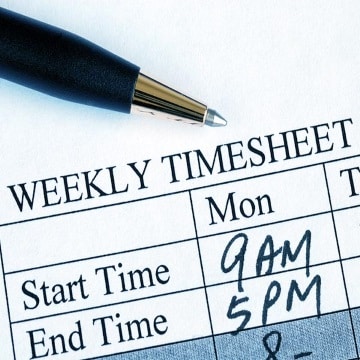FLSA Overtime Regulations

FLSA Overtime RegulationsThe Fair Labor Standards Act (FLSA), is a complex federal employment law that is also sometimes called the “wage and hour” law. The compliance aspect of the Act can confuse even experienced management personnel. It’s also a law that’s commonly violated because of its complexity. Among other things, FLSA sets stringent record keeping standards.
The responsibility to keep records of employees’ work time falls upon the employer under the FLSA. Employers may use any timekeeping method they choose. But they must ensure that the records are accurate and complete for every employee. Some of the things your timekeeping records should include are the date, time in and out of work, and the total number of hours worked. The responsibility to keep these records accurately is completely the employer’s. For example, if an employee doesn’t comply with the record-keeping policies of a company, it doesn’t exonerate that company from the responsibility of keeping the records. One of the best ways to keep accurate records to ensure compliance with FLSA is through the use of a time clock and time and attendance software, such as SwipeClock’s TimeWorksPlus system.
What are the time and attendance record keeping requirements?
All employers must keep records of the following things, for every employee: name, Social Security number, address, date of birth(if younger than 19), gender, total wages per pay period, date of payments and more. For employees who are hourly, the employer needs to maintain records that show the number of hours worked each workday. It’s important that the software an employer uses to track time and attendance is accurate, to stay in compliance.
Do I Have to Use a Time Clock?
The FLSA doesn’t required a time clock. But if you use one, and an employee comes in before their regular work time voluntarily, or if they remain after the end of their scheduled shift, they do not have to be paid for those times. Employees shouldn’t be punching the clock early or late if work is not being done. Also, keep in mind that there will always be some difference in the records kept by the clock, and the actual hours worked, because multiple employees can’t clock out at the same time (unless you’re using software as your clock, such as that provided by SwipeClock). However, employers should discourage major discrepancies.
Some companies, when using time clocks, record employees’ starting and stopping time rounded to the nearest 5 minutes. This practice is acceptable under FLSA if the arrangements average out so that all of the time an employee actually works are counted, and the employee is compensated for them. But using time and attendance software will help you avoid any potential pitfalls in this area, especially due to the importance of the new FLSA overtime regulations.
The time and attendance software such as that provided by SwipeClock helps employers meet the FLSA obligations.
Written by Rob Mouritsen. Last updated June 15, 2016
Simplify HR management today.
Simplify HR management today.
Your Guide to GPS Time Tracking (Geofencing)
Updated March 19, 2024 When your business has employees working remotely or at various job sites, time tracking can become a challenge, particularly if the company relies on physical clocks for punching in and out. But offering a mobile app or web-based tracking solution can cause some concerns. You might wonder whether employees are clocking…
Read MoreThe Employer’s Guide to Federal & State Meal/Rest Break Laws [See all 50 State Laws Here]
Updated January 23, 2024 Under the federal Fair Labor Standards Act (FLSA), employers are not required to provide meal or rest break periods to employees. However, some states do have laws in effect dictating when and how often an employee should receive a break, as well as whether these breaks are paid or unpaid. In…
Read More




